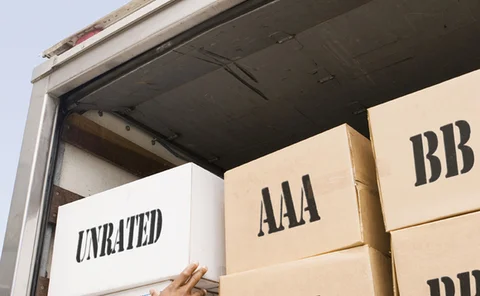Counterparty credit risk
Structured Products Europe: Simple still works
Simple still works
Basel Committee tweaks counterparty risk rules
Basel Committee makes alterations to counterparty credit risk rules
Fair-value accounting for CVA
Fair-value accounting for CVA
The impact of Basel III on systemic risk and counterparty risk
Market analysis: Basel III
Credit derivatives house of the year: Credit Suisse
Risk awards 2011
Structured products house of the year: BNP Paribas
Risk awards 2011
Regulations rocked: UK industry argues for realistic labelling
Label with care
Risk Italia Rankings 2010
A twist in the tail
Banks look to securitisation of counterparty credit risk
Banks look to securitisation of counterparty credit risk
Continuing to rebuild
Degrees of influence
Quant Congress Europe: Basel III CVA charge political, says Swiss regulator
Finma official hits back at industry criticisms of counterparty risk charge, but concedes political pressure to hurt OTC market is undeniable
Sponsored statement: Eurex Clearing
Eurex Clearing offers more ways to rein-in risk
Fixing UBS’s risk management problems
Lofts' conversion
Sponsored forum: Evaluated pricing, operational frameworks, governance and technology tools
Stepping up to the plate
Kempen property basket includes new risk measure
Dutch bank Kempen and Co's property product includes a risk indicator so that risk averse investors know exactly what type of risk they are taking on
HKMA offers guidance on synthetic ETFs
HKMA offers guidance on synthetic ETFs
iShares launches swap-based ETF platform
iShares has launched a swap-based ETF platform with in-built measures to eliminate counterparty risk.
Banks gear up for client clearing
A clear choice
2010 Asia Pacific CVA Forum: Singapore going live with CVA, Korea next?
Domestic banks in Singapore are starting to set up CVA desks at the behest of their regulator, but elsewhere in Asia there are significant obstacles to CVA
Two curves, one price
The financial crisis multiplied the yield curves used to price interest rate derivatives, making traditional no arbitrage pricing no longer valid. By taking into account the basis adjustment bootstrapped from market basis swaps and using a foreign…
New clearing rules may make CDS prohibitively expensive, traders warn
Buy-side market participants are expecting increased operational costs when new regulation on central clearing of CDS contracts is implemented
Two curves, one price
Interest Rate Derivatives
Coping with the new CVA challenges
Countering the credit challenge
Basel Committee defends adjustments to Basel III as calibration decisions loom
Regulators describe difficulties ahead as they prepare for Basel III calibration and transition decisions in September


















